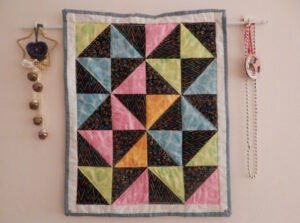Once you feel your manuscript is “done,” one of the best things you can do is set it aside and ignore it for a few days, weeks, or months. Work on something else, take a vacation, do some laundry. Fill your mind with other things. Then-
After your work has sat – go back and read it again. With fresh eyes you will probably catch errors you didn’t see the first twenty times you read it. Make those fixes. If you work with a writers group or have a favorite beta reader, get their feedback and incorporate that information as well. But, if you truly believe you have done all you can do, read it one more time and look for all those little details that can raise writing to its highest level.
Did you incorporate the five senses throughout your work?
Find places to put in sensory information in your descriptions. Do you include what a location sounds like? What the fabric on her dress feels like? What the crime scene smells like? When your character takes a swig from the whiskey bottle, do we get a sense of the taste? When your heroine walks away from the man she loves for the last time, does she hear the wind? Traffic? Waves on the beach? Mysteries can be solved because a dog barks, or doesn’t bark, so make sure you include the little details that make your words come alive on the page.
You can think about details in a number of ways, including time, place, and action.
Time
What time you set your scenes has an impact on what your characters experience. There’s a huge difference between walking a city street in daylight and in the dark. Our energy is usually at its lowest early in the morning – if your hero has been on a stakeout for seven hours, and it’s now 3:00am, how does that change things? Is he fatigued? Wired? Excited? Dulled by boredom? Does he make a mistake because he’s falling asleep? Or jump the gun because he’s had too much coffee?
Cities quiet down after 2:00am, but forests can take on new sounds. What kind of animals are out after dark we don’t see in the daylight? Make your readers say to themselves… oh, yeah, I know exactly what that looks/feels/smells/sounds like – I remember being the only one on the freeway, how hard it is to navigate Times Square mid-afternoon on a sunny, midsummer afternoon, or the sound of coyotes across the desert at night. Be specific about your times of day, then follow those choices up with appropriate details.
Place
Details about locations can make your settings an integral part of the story, almost like another character. Row houses in San Francisco look nothing like the projects in the Bronx, you’ve chosen your location, now it’s time for you to make the most of it.
Assume your readers have never been where you’re writing about – how can you make them feel the salt spray in a Nor’easter blowing across the coast of Maine or feel the wind blowing across the Wyoming landscape, and how are those different? (They are!) Most importantly, how can you do it in a way that incorporates smoothly with your story, uses the fewest words to give the greatest impact, and adds to your narrative.
Are these details seen through the eyes of your character? Does it make her feel happy? Does it make him feel uncertain? Does it add tension, or lull them into complacency. Or, are they details your character no longer sees, and because of this, misses a vital piece of information that your reader will be waiting, turning pages, to find out if she realizes what’s missing?
You an also use details about your place to echo the emotional state of your characters. If your character is lonely, how can the location make her feel worse? If your character is angry, what colors in the environment can reflect that? If there’s a dead body, how can the environment demonstrate either the peacefulness of the scene or the violence of it? Use these details to compare or contrast. Both can be effective. Try one way and then the other to see which works best for you.
Action
How a character does something can speak volumes. Does your character stomp into a room? Or slip in quietly? Does your protagonist always speak first in a situation? Or sit back to see what others will do first? Does your antagonist blend in? Or stand out?
Using actions can show your readers character development and story arc. If your private investigator didn’t look in the closet the first two times he visited the crime scene, what happens the third time to make him open the door? What tiny detail gets noticed? If your heroine refused to have a drink with the handsome stranger, then stays up all night thinking about him, then tracks him down the next morning, that’s very different than saying “yes” the first time he asks her out. How do these two scenarios impact the details of the experience, does the second create a sense of worry? Does the first make it spur-of-the-moment, and therefore freeing?
Specificity of words can help strengthen actions to clearly show the reader what you want them to see in your character. Does he pull the punch just before he hits his little brother? or let fly with all his power? Does she let tears roll down her cheek when her mother leaves? Or hide them? Then, at the end of the book, does he choose not to hit his brother at all? Or let her mother see the tears, showing she’s no longer afraid to say she misses her mother when she’s not around? What details do you include to show us your characters emotional state instead of telling us their emotional state?
Sometimes, finding ways to show them doing the same thing over and over until something causes them to make a small change, is more satisfying to the reader than having you tell the reader that a character has undergone a shift. SHOW us that shift through a change in action, which can only be done with clear details.
Some say the Devil is in the details, others say God is in the details. Either way, good writing is in the details, how you use them, and what they SHOW your readers. If it keeps your readers turning pages, your details have done their job and agents will notice the extra work you put in.


